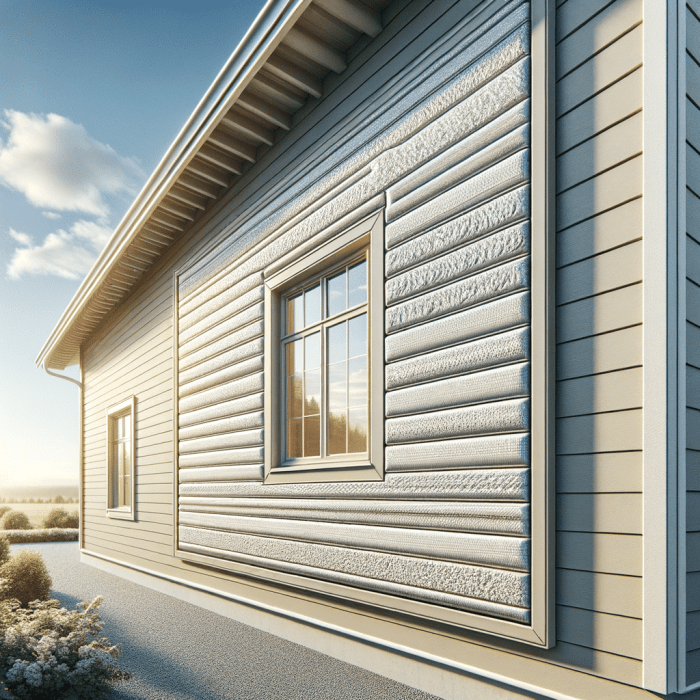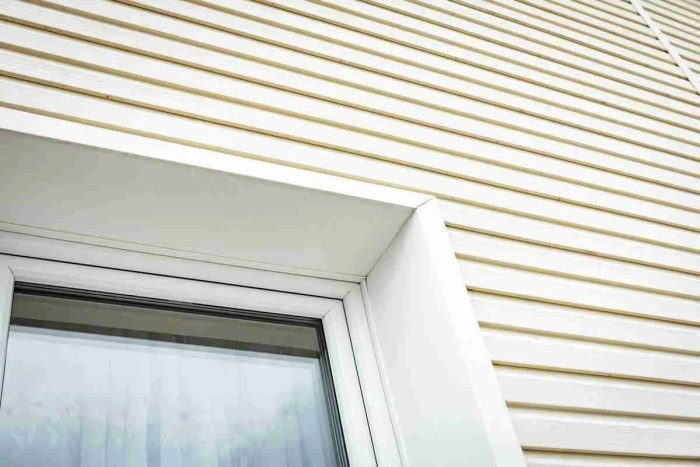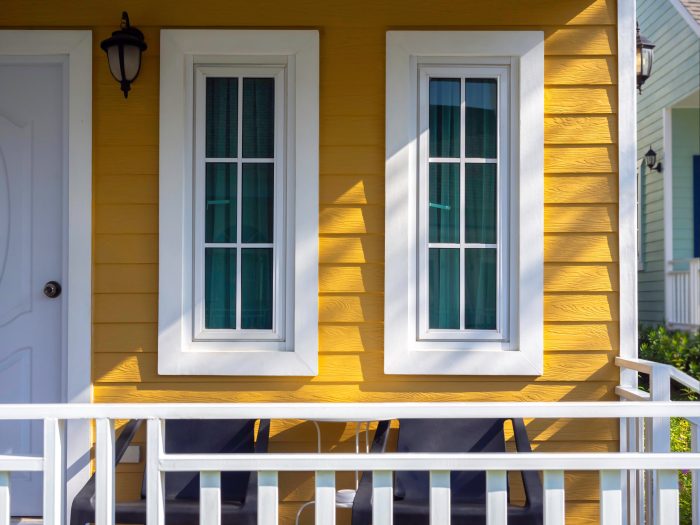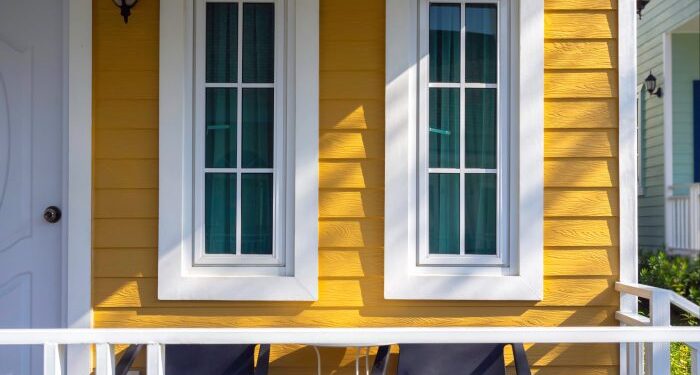Energy-Efficient Siding: Does It Really Save Money? sets the stage for this enthralling narrative, offering readers a glimpse into a story that is rich in detail with casual formal language style and brimming with originality from the outset.
Energy-efficient siding is a smart choice for homeowners looking to reduce energy costs and environmental impact. This guide explores the ins and outs of this innovative siding option, shedding light on its benefits and potential savings.
Introduction to Energy-Efficient Siding

Energy-efficient siding refers to materials and techniques used in the construction or renovation of a home to reduce energy consumption and increase thermal efficiency. The primary purpose of energy-efficient siding is to minimize heat transfer between the interior and exterior of a building, thus reducing the need for heating and cooling systems.
How Energy-Efficient Siding Works
Energy-efficient siding works by providing a barrier against the elements, preventing heat loss during colder months and heat gain during warmer months. This is achieved through various insulation materials and installation methods that improve the overall thermal performance of a structure.
Common Materials Used in Energy-Efficient Siding
- Foam-backed vinyl siding: This type of siding comes with an added layer of foam insulation, increasing the R-value and reducing energy loss.
- Fiber cement siding: Known for its durability and resistance to weather elements, fiber cement siding can also be paired with additional insulation for enhanced energy efficiency.
- Wood siding with insulation: Traditional wood siding can be combined with foam or other insulation materials to improve thermal performance.
Cost-Saving Benefits of Energy-Efficient Siding
Energy-efficient siding offers several cost-saving benefits that can make a significant impact on your finances over time. By investing in energy-efficient siding, you can enjoy long-term savings through reduced energy bills, lower maintenance costs, and increased property value.
Reduced Energy Bills
Energy-efficient siding helps in better insulation of your home, reducing heat loss during winter and heat gain during summer. This means your HVAC system will not have to work as hard to maintain a comfortable temperature inside your home, leading to lower energy consumption and subsequently lower utility bills.
Lower Maintenance Costs
Energy-efficient siding is designed to be durable and resistant to elements such as moisture, rot, and pests. This means you will spend less on repairs and maintenance over the years compared to traditional siding options. The initial investment in energy-efficient siding can translate into long-term savings on upkeep and repairs.
Increased Property Value
Investing in energy-efficient features like siding can increase the overall value of your property. Potential buyers are often willing to pay more for a home with energy-efficient upgrades that can help them save on energy costs in the long run.
This increase in property value can further contribute to your overall financial savings.
Overall, while the initial cost of energy-efficient siding installation may be higher than traditional siding options, the long-term cost-saving benefits make it a worthwhile investment. Not only will you save money on your energy bills and maintenance costs, but you can also potentially increase the value of your property.
Environmental Impact of Energy-Efficient Siding
Energy-efficient siding not only provides cost-saving benefits but also plays a crucial role in reducing environmental impact and promoting sustainability. By analyzing the environmental benefits of using energy-efficient siding, comparing the carbon footprint of traditional siding versus energy-efficient options, and explaining how energy-efficient siding contributes to sustainability, we can better understand the positive impact of this eco-friendly choice.
Reduced Energy Consumption
- Energy-efficient siding helps in maintaining indoor temperatures, reducing the need for constant heating or cooling.
- This reduced energy consumption leads to lower greenhouse gas emissions, contributing to a healthier environment.
Longevity and Durability
- Energy-efficient siding is designed to be more durable, lasting longer than traditional siding materials.
- This longevity reduces the overall environmental impact by decreasing the frequency of siding replacements and the associated waste.
Recyclable Materials
- Many energy-efficient siding options are made from recyclable materials, further reducing the demand for new resources.
- Recycling these materials at the end of their lifespan helps in minimizing waste and promoting a circular economy.
Factors Influencing the Cost Savings

Energy-efficient siding can lead to significant cost savings over time, but several factors can influence the amount of money saved and the overall effectiveness of the investment. Proper understanding and consideration of these factors are crucial for maximizing the benefits of energy-efficient siding.
Importance of Proper Installation
One of the key factors that can influence the cost savings associated with energy-efficient siding is the proper installation of the siding. Ensuring that the siding is installed correctly and according to manufacturer specifications is essential for optimal energy savings.
Poor installation can lead to gaps, air leaks, and reduced insulation properties, resulting in decreased energy efficiency and higher utility bills.
Maintenance Requirements and Long-Term Savings
Another important factor to consider is the maintenance requirements of energy-efficient siding. Regular maintenance, such as cleaning, inspection, and repairs, is necessary to ensure that the siding remains in good condition and continues to provide energy-saving benefits. Neglecting maintenance can lead to deterioration of the siding's performance over time, reducing its effectiveness and potentially increasing long-term costs.
Additional Considerations for Energy-Efficient Siding
Energy-efficient siding offers more benefits beyond just cost savings. Here are some important factors to consider when choosing the right energy-efficient siding for your home:
Choosing the Right Energy-Efficient Siding for Specific Climates
It's essential to select siding materials that are suitable for the climate in which you live. For colder climates, insulated siding can help improve energy efficiency by reducing heat loss. On the other hand, in warmer climates, siding with reflective properties can help keep your home cool by deflecting sunlight.
Incentives and Rebates for Installing Energy-Efficient Siding
Many government agencies and utility companies offer incentives or rebates for homeowners who choose to install energy-efficient siding. These financial incentives can help offset the initial cost of the siding and make it a more affordable option in the long run.
Final Wrap-Up

In conclusion, Energy-Efficient Siding: Does It Really Save Money? delves deep into the world of energy-efficient home solutions, showcasing the practicality and eco-friendliness of opting for this siding option. With a focus on long-term savings and sustainability, energy-efficient siding emerges as a wise investment for any homeowner.
Expert Answers
Is energy-efficient siding worth the initial investment?
Yes, the initial cost may be higher, but the long-term savings on energy bills make it a worthwhile investment.
Are there different types of energy-efficient siding materials available?
Yes, materials like insulated vinyl, fiber cement, and engineered wood are commonly used for energy-efficient siding.
Do energy-efficient siding options vary based on climate?
Yes, it's important to choose siding that is suited for the specific climate of your region to maximize energy savings.
















